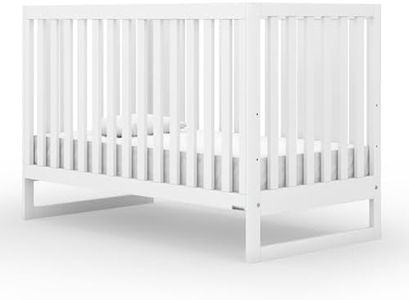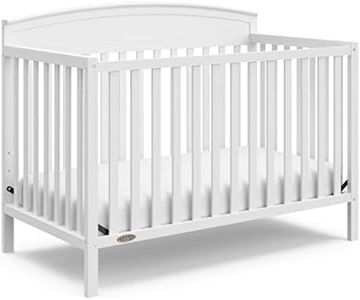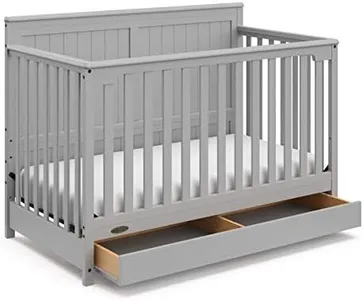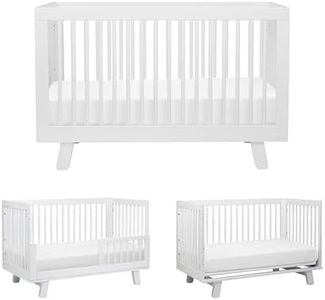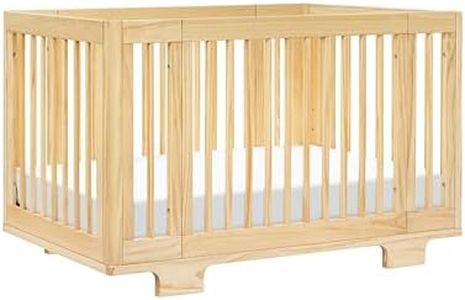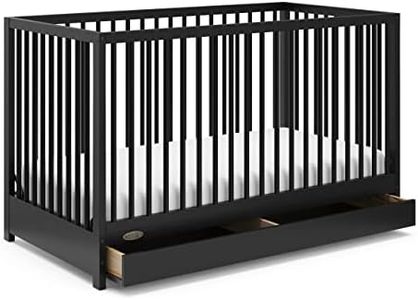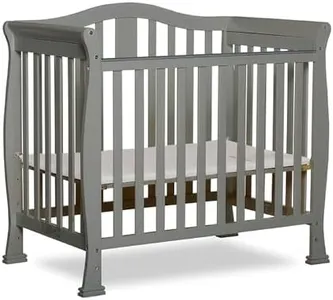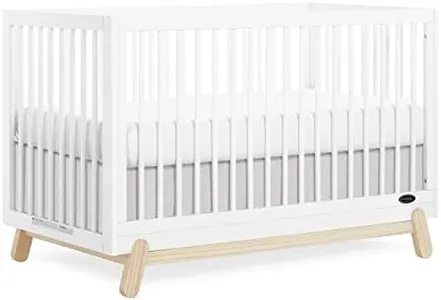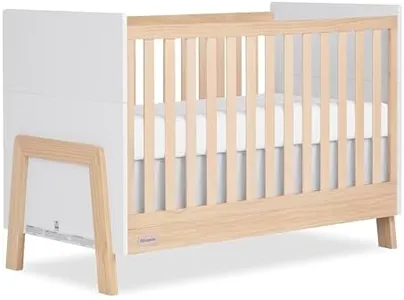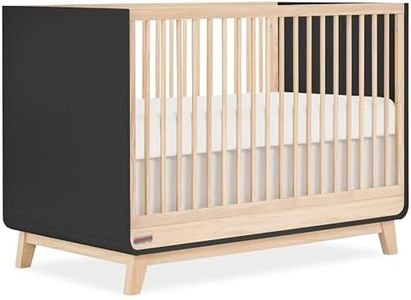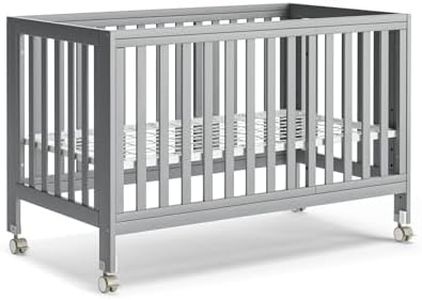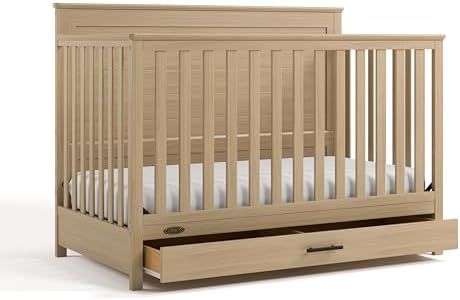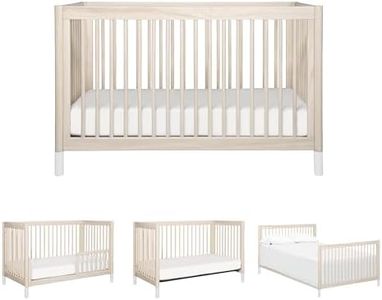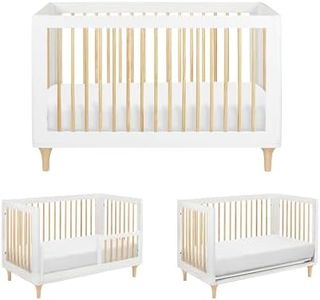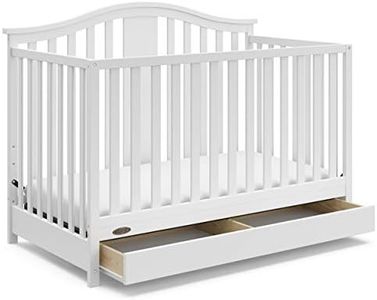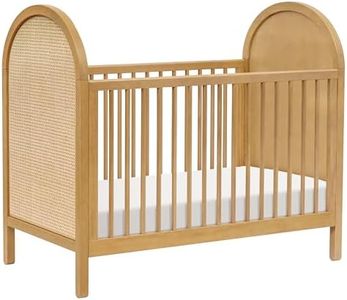10 Best Convertible Cribs 2025 in the United States
Our technology thoroughly searches through the online shopping world, reviewing hundreds of sites. We then process and analyze this information, updating in real-time to bring you the latest top-rated products. This way, you always get the best and most current options available.

Our Top Picks
Winner
Graco Benton 5-in-1 Convertible Crib (White) – GREENGUARD Gold Certified, Converts from Baby Crib to Toddler Bed, Daybed and Full-Size Bed, Fits Standard Full-Size Crib Mattress
Most important from
9753 reviews
The Graco Benton 5-in-1 Convertible Crib is a versatile option for parents looking to invest in a long-term solution for their child’s sleeping arrangements. It can transition from a baby crib to a toddler bed, daybed, and full-size bed, offering extended usability. However, the conversion kits for toddler bed and full-size bed are sold separately. The crib is made from pine wood, engineered wood, and wood composites, ensuring a sturdy build.
It has a GREENGUARD Gold certification, indicating it meets high safety standards for indoor air quality and is JPMA certified for safety standards, making it a safe choice for your child. The adjustable mattress support with four height options adds to its versatility, allowing the crib to adapt as your baby grows. It fits any standard full-size crib mattress, which is sold separately. The Graco Benton crib is praised for its craftsmanship and has received awards like the Women’s Choice Award and the Parent Tested Parent Approved (PTPA) Seal of Approval.
The crib’s dimensions are 29.72 inches in length, 56.73 inches in width, and 41.68 inches in height, making it suitable for a variety of nursery spaces. The white color and classic design make it a stylish addition to any nursery. On the downside, assembly is required and some users might find it challenging. Additionally, at 42 pounds, it may be heavier than some other options, which could be a consideration for those needing to move it frequently. With a customer rating of 4.6 out of 5 stars from over 9,600 reviews, it is well-regarded by many users.
Most important from
9753 reviews
Graco Hadley 5-in-1 Convertible Crib with Drawer (Pebble Gray) – GREENGUARD Gold Certified, Crib with Drawer Combo, Full-Size Nursery Storage Drawer, Converts to Toddler Bed, Daybed
Most important from
4123 reviews
The Graco Hadley 5-in-1 Convertible Crib with Drawer is a versatile choice for parents seeking a long-lasting sleeping solution for their child. Its standout feature is its incredible convertibility; it can transform from a crib to a toddler bed, daybed, and full-size bed, accommodating your child's growth over the years. This adaptability is complemented by an adjustable mattress height with three settings, making it easier to access your baby as they grow. The crib also includes a full-size storage drawer, adding much-needed organization to your nursery space, especially beneficial for parents managing various baby essentials.
In terms of safety, the crib is JPMA certified and has undergone rigorous testing to meet safety standards, providing peace of mind for parents. It's crafted from sustainable New Zealand pine, ensuring both quality and environmental responsibility.
There are some factors to consider. Assembly is required, which could be challenging for those not handy with tools. Additionally, while the crib does come with some flexibility, the toddler guardrail and full-size bed conversion kit are sold separately, adding to the cost. The crib’s weight (around 65.6 pounds) may also be a consideration for those needing to move it frequently.
Most important from
4123 reviews
Babyletto Hudson 3-in-1 Convertible Baby Crib with Toddler Bed & Daybed Conversion - Easy to Assemble - GREENGUARD Gold Certified w/ 4 Adjustable Mattress Heights - White
Most important from
1781 reviews
The Babyletto Hudson 3-in-1 Convertible Crib is a stylish and practical choice for new parents looking for a versatile sleeping solution for their baby. Its modern design, featuring an iconic turned-out foot and rounded spindles, fits well in a variety of nursery aesthetics. One of its standout features is its 3-in-1 convertibility, allowing it to transition seamlessly from a crib to a toddler bed and daybed, which can be a great investment for growing kids. The included toddler bed conversion kit adds value and ease of use.
Safety is a top priority with this crib, as it is Greenguard Gold Certified, meaning it has undergone extensive testing for chemical emissions, ensuring a healthier environment for your child. It’s made from sustainably sourced New Zealand pine wood, which is both durable and eco-friendly. Its adjustable mattress height with four positions makes it easy to place a newborn in and out of the crib without straining your back.
The mattress is sold separately, which means that you'll need to factor that additional cost into your budget. The crib's size is standard, but if you have limited space, it's wise to measure your nursery to ensure a good fit.
Most important from
1781 reviews
Buying Guide for the Best Convertible Cribs
Choosing the right convertible crib for your baby is an important decision, as it will be a central piece of furniture in your nursery and will grow with your child. Convertible cribs are designed to transform from a crib to a toddler bed, daybed, and sometimes even a full-sized bed, providing long-term use and value. When selecting a convertible crib, consider the following key specifications to ensure you pick the best fit for your needs and preferences.FAQ
Most Popular Categories Right Now
